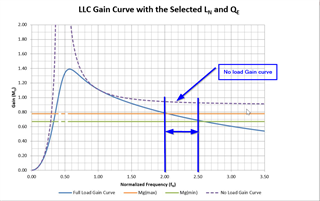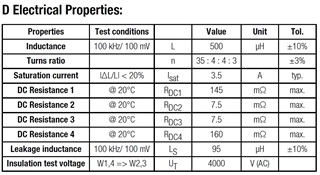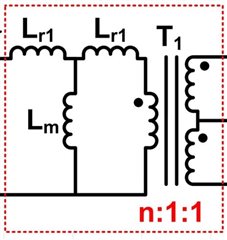Dear Sir/Madam,
I am hoping to modify PFCLLCSREVM034 to output 30V/5A/150W so I am currently design a LLC stage by the tool UCC25640x Design Calculator Rev4.0.
I will replace the transformer and the resonant inductor Lr will be replaced by leakage inductor of transformer.
Here are some design results, their transformer parameters are different so the LLC gain curves are different as well.
1) 24V/8A transformer. operating frequency 70k-120k
In this curve, LLC switching frequency range is 72.3k-82.6kHz. The gain is between 1.302-1.510
2) 48V/5A transformer. operating frequency 70k-120k
In this curve, LLC switching frequency range is 207.6k-263.3kHz. The gain is between 0.67-0.77.
At this moment, I choose solution 1. The reason is LLC switching frequency is in the transformer operating range.
But I am hoping to know, is second solution acceptable IF transformer operating frequency range is very wide or cover the LLC switching frequency?
Moreover, I would like to ask is there a most suitable gain range when we are design the LLC stage?
Thank you for answering.
Regards,






